

Dell PowerFlex Plug-in for Oracle Enterprise Manager: Simplify the Oracle management experience
Fri, 03 Feb 2023 15:17:53 -0000
|Read Time: 0 minutes
Oracle databases are critical components for most business operations. Many organizations have hundreds, if not, thousands of Oracle databases running across on-premises and public cloud locations. Managing and monitoring these databases, including the applications and the underlying infrastructure associated with them, can pose a challenge to IT providers. The Oracle Enterprise Manager (Oracle EM) management tool can help reduce these challenges by enabling users to monitor and manage Oracle IT infrastructure from a single console. It provides a single dashboard for managing all Oracle database deployments, whether in the data center or in the cloud.
The Dell Technologies plug-in for Oracle EM uses Dell OpenManage technology to allow Oracle DBAs to monitor and proactively set alerts for Dell PowerEdge and Dell PowerFlex systems using the Oracle EM console for a proactive approach to data center management. In addition to Dell infrastructure management, the plug-in also supports mapping of database workloads to Dell hardware for quicker fault detection.
What is Oracle EM?
Oracle EM is a single-pane-of-glass graphical user interface (GUI) management tool. Oracle EM is an Oracle flagship management product for the whole Oracle stack. It provides a comprehensive monitoring and management solution for Oracle database and applications including Oracle Engineered Systems deployed in the cloud or on-premises. Both large and small enterprises running Oracle products rely on Oracle EM for everyday management of mission-critical applications.
The capabilities of Oracle EM include:
- Enterprise monitoring
- Application management
- Database management
- Middleware management
- Hardware and virtualization management
- Heterogeneous (Non-Oracle) management
- Cloud management
- Lifecycle management
- Application performance management
- Application quality management
What is Oracle EM Plug-in?
An Oracle EM plug-in defines a new type of target that can be monitored by Oracle EM. A target can be defined as an entity that can be monitored within an organization. This entity can be an application running on a server, the server itself, the network, or a storage device.
Oracle EM makes managing target instances simple by enabling you to add a new target to the management framework from the Oracle EM console. After adding a new target, you can take advantage of Oracle Enterprise Manager’s monitoring and administrative features for that target and others.
What is Dell PowerFlex Platform?
Dell PowerFlex is a hyperconverged infrastructure (HCI) platform that combines storage, compute, and networking resources with industry-standard hardware. It empowers organizations to harness the power of software and embrace change while achieving consistently predictable outcomes for mission-critical workloads. Dell PowerFlex is a modern platform that delivers extreme flexibility, massive performance, and linear scalability while simplifying complete infrastructure management and boosting IT agility. It is the ideal foundation for organizations that are looking to modernize their mission-critical applications like Oracle, consolidate heterogeneous workloads, and build agile, private, and hybrid clouds. It is also optimized and validated for a broad set of enterprise workloads including Oracle database, Microsoft SQL Server, SAP HANA, Cassandra, MongoDB, to Splunk, SAS, and Elastic Search.
There are several options for a PowerFlex deployment, as described in the following table:
Deployment Type | Description |
Hyperconverged |
|
Two-layer |
|
Hybrid hyperconverged |
|
PowerFlex compute-only nodes |
|
PowerFlex storage-only nodes |
|
What is Dell Plug-in for Oracle EM and what does it do?
Dell Plug-in for Oracle EM provides a proactive approach to managing hardware for database servers such as the PowerEdge and monitoring the PowerFlex two-layer deployment components such as SDC and SDS and their sub-components through the integration with Dell OpenManage and PowerFlex gateway. This plug-in allows DBAs to discover, inventory, and monitor the database infrastructure running on Dell PowerFlex platform. Because Oracle maps databases to server host names, the DBAs can proactively monitor for any potential database performance issues by drilling down on the SDC nodes or SDS nodes.
After launching the Oracle EM GUI, DBAs can navigate to the dashboard of the managed target, in this case the PowerFlex, to get an overall view of the PowerFlex system including the PowerFlex gateway IP, cluster storage capacity, SDC nodes health alerts, and the storage overall performance.
This plug-in also provides DBAs the ability to launch the PowerFlex management console from the Oracle EM console to further investigate issues or to perform other PowerFlex tasks such as troubleshooting, configuration, or management of the PowerFlex components.
This release of the plug-in provides Dell server hardware and storage monitoring for Oracle databases running on Dell PowerFlex. More features will be available in later releases. Not only will more features be available, but the plug-in will be available on other Dell platforms as well.
To learn about more features, see the Dell Plug-in for Oracle Enterprise Manager User Guide.
The following screenshots provide examples of Oracle EM in action with PowerFlex infrastructure.
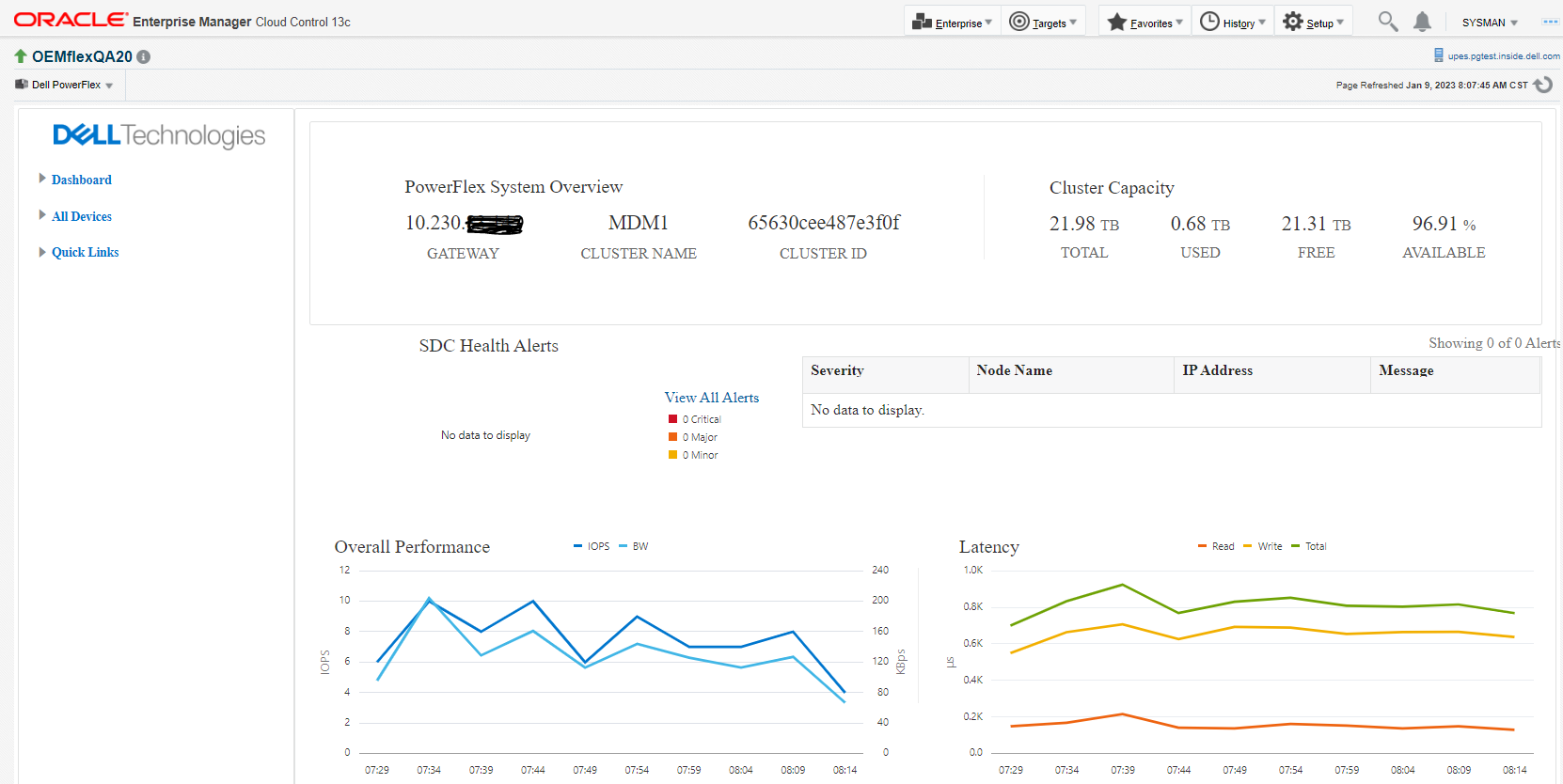
Figure 1. Oracle EM - Dell Plug-in Dashboard
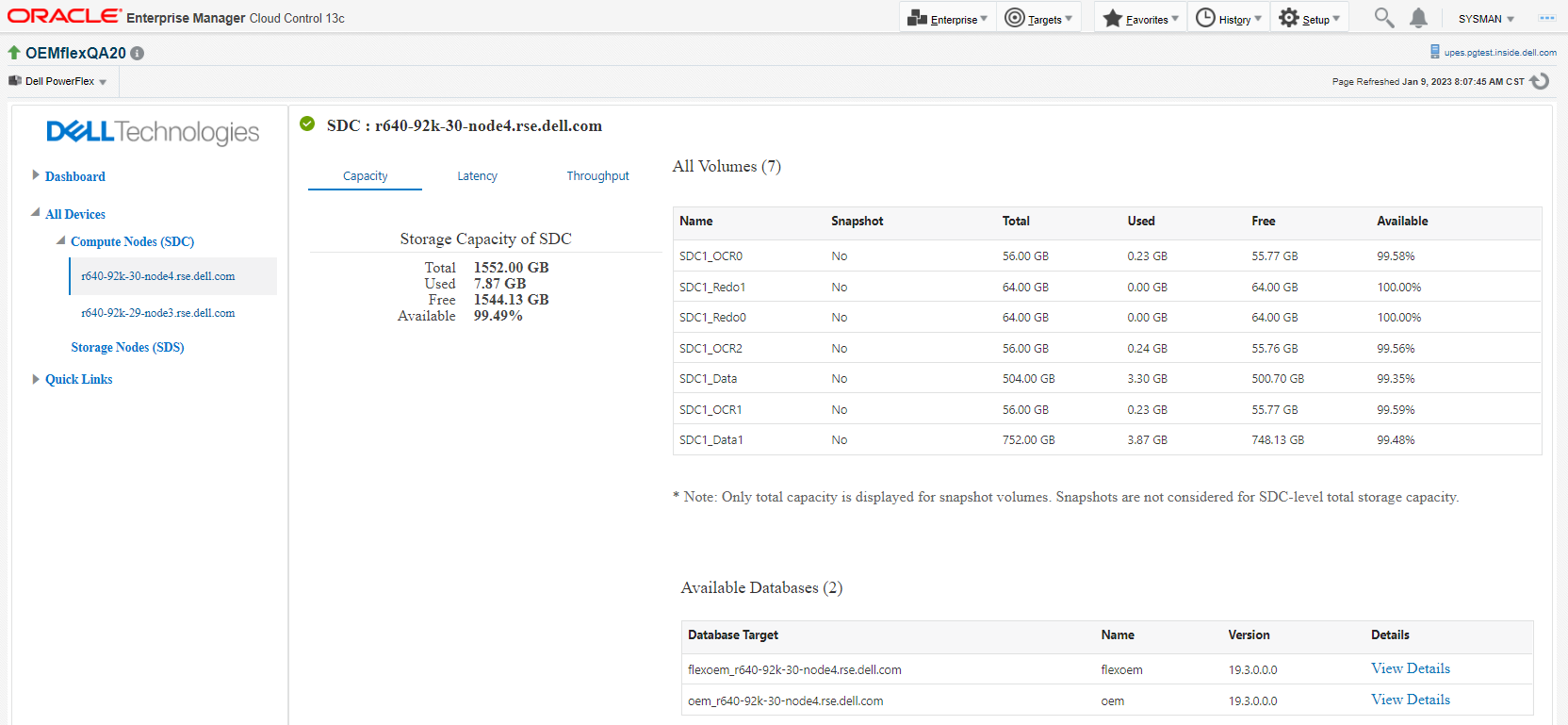
Figure 2. Oracle EM - Dell Plug-in - Compute node Capacity tab
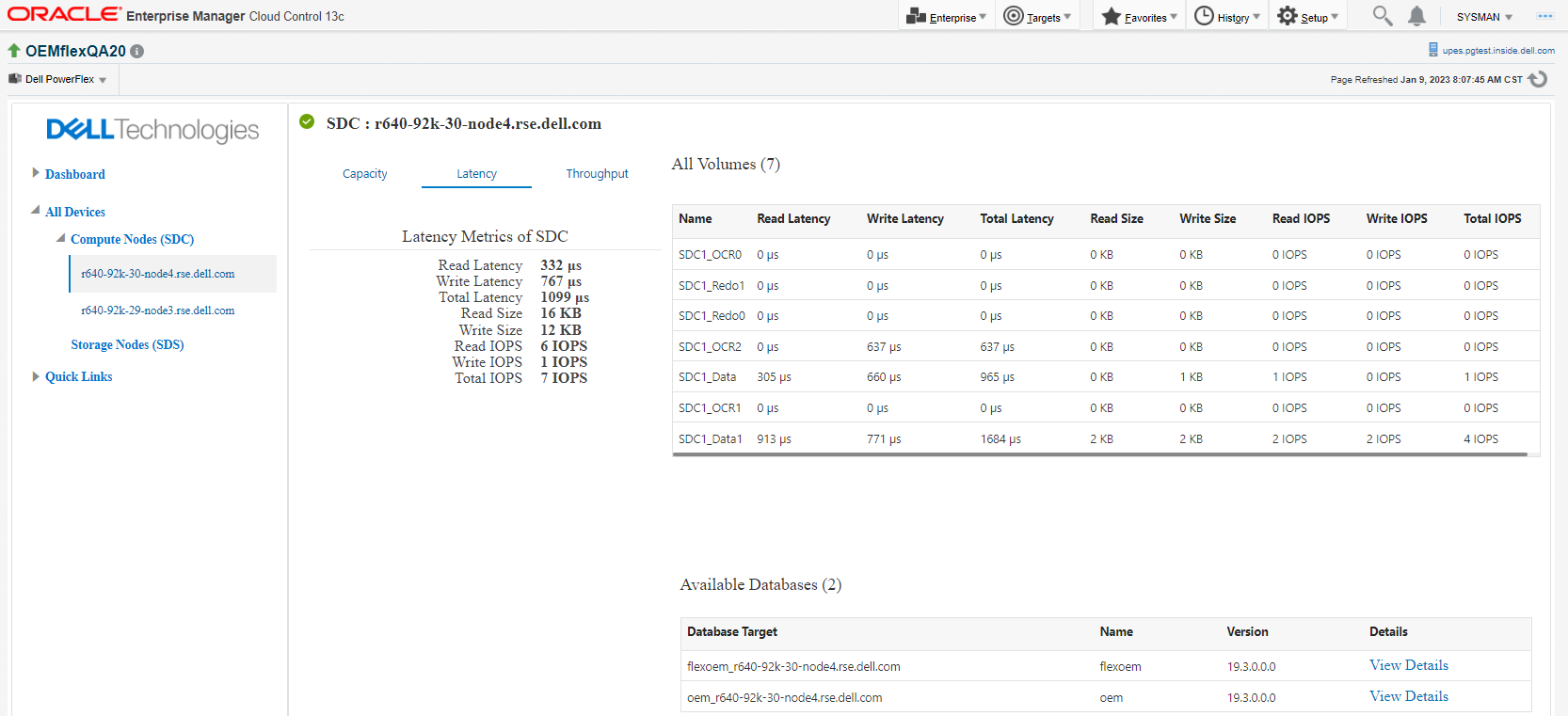
Figure 3. Oracle EM - Dell Plug-in - Compute node Latency tab
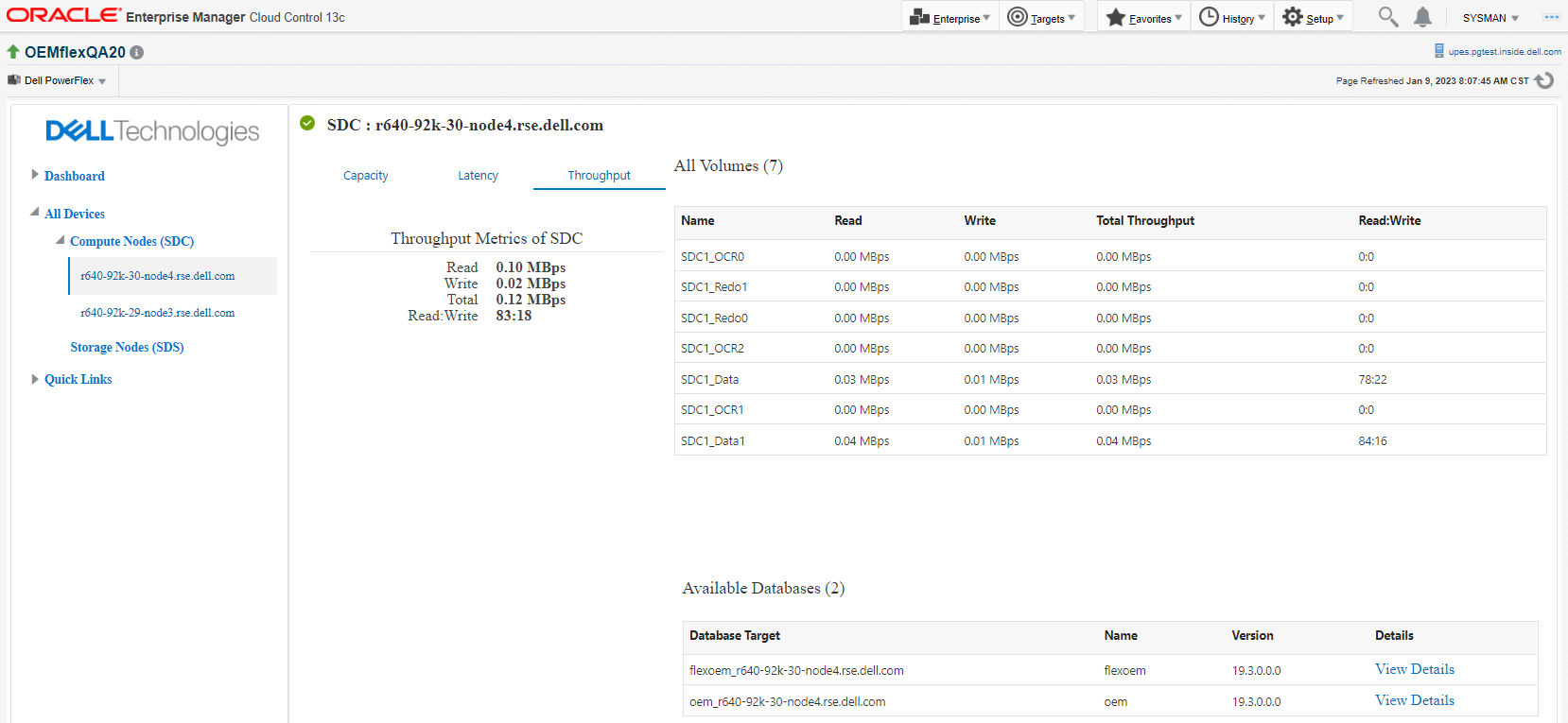
Figure 4. Oracle EM - Dell Plug-in - Compute node Throughput tab

Figure 5. Oracle EM - Dell Plug-in - Storage node health
Summary
To improve our customer business outcomes, Dell Technologies continues to innovate and integrate with third-party software. With future releases of the Dell Plug-in for Oracle EM more features will be available to enable the DBAs to easily manage their Oracle database environments on Dell platforms.
Additional resources
Dell Plug-in for Oracle EM Release Notes
Dell Plug-in for Oracle EM Installation Guide
Related Blog Posts

NVMe/FC vs. SCSI/FC – The Numbers Are In
Thu, 15 Jun 2023 18:54:10 -0000
|Read Time: 0 minutes
Dell Technologies and Broadcom collaborated to understand database workloads performance comparison between NVMe/FC and SCSI/FC. The two companies performed a study and commissioned a third party (Tolly) to initiate the benchmark using a Broadcom Emulex LPe36002 64Gb Host Bus Adapter (HBA), a 16G PowerEdge server, and a PowerStore storage array. Dell Technologies is in a unique position to offer end to end NVMe/FC capabilities resulting in significant performance gains as evident in this study using its mid-range storage product line such as PowerStore.
NVMe and SCSI
Non-Volatile Memory Express (NVMe) is a host controller interface designed to scale and address the needs of enterprise and client systems that use PCI Express ®-based solid-state storage. It is designed specifically for high-performance, multi-queue communication with non-volatile memory (NVM) devices. NVMe supports up to 64K commands per queue and up to 64K queues for parallel operations. NVMe can be transported over Fibre Channel protocol as a means to connect storage devices and servers over an extended distance.
Small Computer System Interface (SCSI) is set of standards and commands for transferring data between devices. SCSI can support one command queue with a queue depth of up to 256 commands. SCSI commands can be transported over Fibre Channel protocol as well.
Fibre Channel Storage Area Network (SAN) is a specialized, high-speed, low-latency networking method of connecting storage devices to servers. It is an ordered, lossless transport protocol used primarily for SCSI commands. The Fibre Channel SAN connects storage devices and servers using optical fibers and supports data rates of 1, 2, 4, 8, 16, 32, 64, and 128 gigabit per second.
In a world of NVMe/FC and SCSI/FC, both NVMe and SCSI data are encapsulated and transported within Fibre Channel frames.
Benchmark setup
The performance comparison between NVMe/FC and SCSI/FC was focused on database throughput, latency, and CPU efficiency using TPROC-C like workload. Oracle Database 19c and Microsoft SQL Server 2019 were used along with HammerDB as a front-end client software.
The test bed for the benchmark includes:
- 1 x Dell PowerEdge R760 rack server with Emulex LPe36002 64Gb Host Bus Adapter
- 1 x Dell PowerStore 9200T
- 1 x Brocade G720 FC switch
Test results
To view the complete test report and the detailed test bed configuration, see the following documents:

Proof of Concept – Running Oracle and Microsoft SQL Databases on Dell APEX – Part 1
Wed, 31 May 2023 16:08:03 -0000
|Read Time: 0 minutes
Oracle and Microsoft SQL databases are critical components of most business operations. Most organizations have many Oracle and Microsoft SQL databases spread across on-premises and the cloud. Procuring the underlying infrastructure can pose a challenge to IT. These challenges can be minimized by using Dell APEX Private Cloud, Hybrid Cloud, or APEX Data Storage Services offerings.
What is Dell APEX?
Dell APEX is a portfolio of Dell Technologies as-a-Service offerings simplify digital transformation by increasing IT agility and control. It gives customers a seamless IT experience by delivering infrastructure, devices, and applications as-a-Service. Customers have the freedom to scale resources up or down quickly to react to their business requirements. Dell APEX makes it easier than ever to unlock the full potential of multicloud, allowing customers to capitalize on cloud experiences and have access to best-in-class technologies to drive innovation. Dell APEX gives customers control of the security, access, and location of their data.
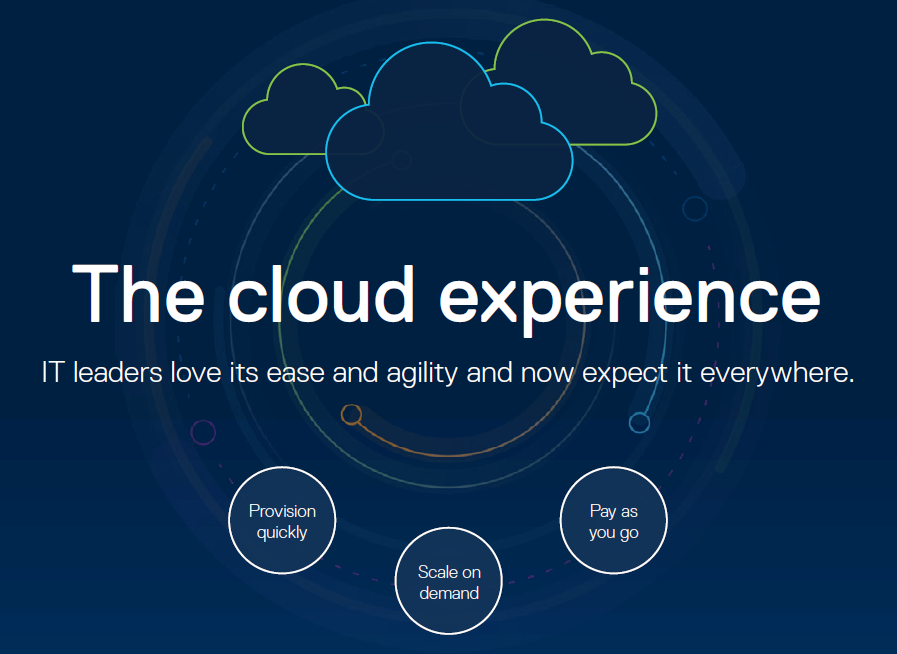
Why run Oracle and Microsoft SQL Databases on Dell APEX?
Traditionally, building an infrastructure solution for mission-critical databases such as Oracle and Microsoft SQL can be a time-consuming and complex process because running these databases in production demands high performance, high availability, and elasticity. Technologies and lines of business are constantly changing, which makes it difficult for IT to forecast infrastructure requirements. CAPEX and time-to-market (TTM) must also be evaluated.
To solve these challenges, IT architects are often required to work with business stakeholders on a regular cadence to build the right software and hardware technologies to enable business growth and minimize complexities. Because hardware technology enhancements are developing rapidly, the technology refresh also needs to be aligned. This technology refresh requires IT architects to research, procure, and test the technology as soon as possible in this never-ending process.
The reason to upkeep with the latest hardware technology is because mission-critical applications running on Oracle or Microsoft SQL databases require zero downtime for a business to be successful. Even a brief outage of a mission-critical application is likely to have negative financial consequences.
With Dell APEX, customers only focus on business outcomes and not the infrastructure. Dell APEX delivers as-a-Service solutions which offer a core set of capabilities from deployment to ongoing infrastructure monitoring, operations, optimization, and support. It provides customers a seamless experience to manage their entire cloud and as-a-service journey. Customers can easily browse a selection of as-a-Service/cloud solutions and then place an order for their business. Customers can also deploy workloads, manage their multicloud resources, monitor their costs in real-time, and add cloud services, all with a few clicks.
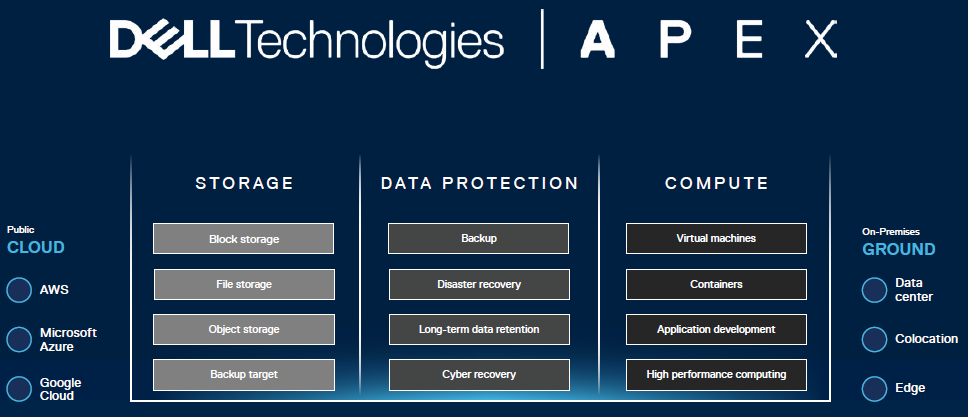
Proof of concept
The Dell Solutions Engineers deployed both Oracle and Microsoft SQL database workloads to demonstrate the Dell APEX Cloud offerings. Since Dell APEX offers infrastructure as-a-Service, the Solutions Engineers focused on business outcomes for Oracle and Microsoft SQL workloads. The business outcomes for this proof of concept are the number of New Orders Per Minute (NOPM) and the number of Transactions Per Minute (TPM). These requirements simulate a retail business where customers can order new products online. The requirements for Oracle and Microsoft SQL workloads are around 120,000 NOPM and around 300,000 TPM.
The Solutions Engineers requested an infrastructure as-a-Service from the APEX team that would meet these workload requirements through the APEX console.
Because this exercise was based on the private cloud model, the Dell APEX team delivered a pre-engineered solution that was optimized for database workloads. The Dell APEX Private Cloud with APEX Data Storage Services infrastructure provide a seamless, curated, and optimized production-ready solution, meaning it consists of necessary components not just for the requirements but also includes backup and recovery. The Solutions Engineers were given access to start deploying virtual machines, installing operating systems, configuring storage devices, and installing and configure Oracle and Microsoft databases.
Another approach to running workloads on Dell APEX is to migrate existing Oracle and Microsoft SQL databases on to the Dell APEX Private Cloud infrastructure. This option not only enables customers to easily migrate existing virtual machines configurations to Dell APEX, reducing setup time and enabling the business quicker time-to-market, but also provides a level of confidence to the customers knowing that their existing VMs configurations were performing adequately before moving to the APEX Private Cloud.
To accomplish this proof of concept, the Solutions Engineers copied the Oracle and Microsoft SQL OVA archive files from their existing environment to the new Dell APEX Private Cloud infrastructure and spun up the VMs. After the database VMs were successfully up and running, the engineers used an open-source benchmark tool called HammerDB to simulate an Online Transaction Processing (OLTP) workload against both Oracle and Microsoft SQL databases. Table 1 shows the VMs configurations.
Table 1. Database VMs Configurations
| Workloads | # of VMs | # of vCPU | Memory |
|---|---|---|---|
Oracle | 1 | 6 | 192 GB |
Microsoft SQL | 1 | 10 | 112 GB |
The HammerDB benchmark tool was used to simulate the retail business example stated above. The below table shows the HammerDB workload configuration.
Table 2. HammerDB Workload Settings
| Setting name | Value |
|---|---|
Total transactions per user | 10,000,000 |
Number of warehouses | 10,000 |
Minutes of ramp up time | 10 |
Minutes of test duration | 50 |
Use all warehouses | Yes |
No. of virtual users | 80 |
User delay (ms) | 500 |
Repeat delay (ms) | 500 |
Iterations | 1 |
To ensure results consistency, multiple iterations of the OLTP workload benchmark were performed. The final test results derived from the average of three tests. Table 3 below shows the results for the NOPM and TPM for Oracle and Microsoft SQL workloads.
Table 3. Workloads results
| Workloads | NOPM | TPM |
|---|---|---|
Oracle | 147,874 | 313,130 |
Microsoft SQL | 130,824 | 300,978 |
Summary
Based on these results, we are confident that when we subscribe to Dell APEX offerings we will achieve the desired outcomes. With Dell APEX, the Solutions Engineers did not spend time on researching or validating what hardware to procure for these workloads but instead they just used the Dell APEX console and subscribe to resources already engineered to meet the business requirements.
In the next blog we are going to fully populate an APEX Private Cloud and APEX Data Storage Services subscription with Oracle and Microsoft SQL workloads in order to show how well it handles a demanding workload.
Additional resources
Containerized Microsoft SQL Server on Dell Technologies APEX


